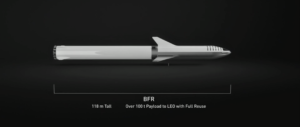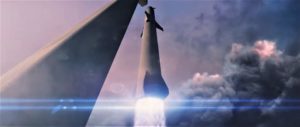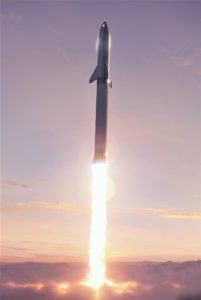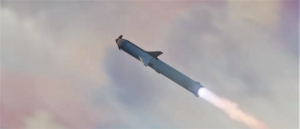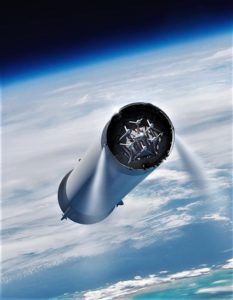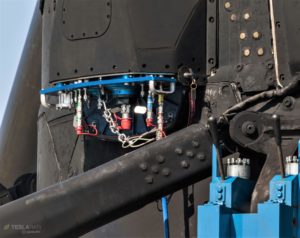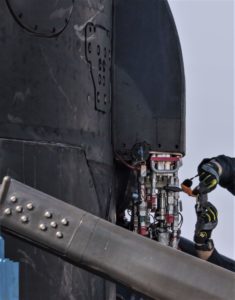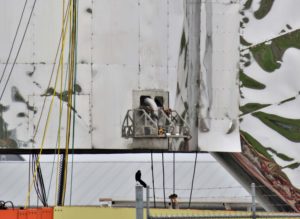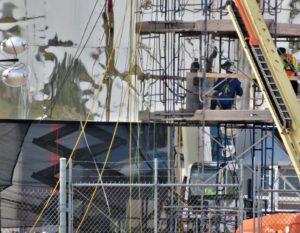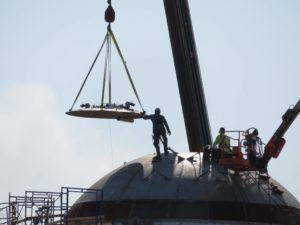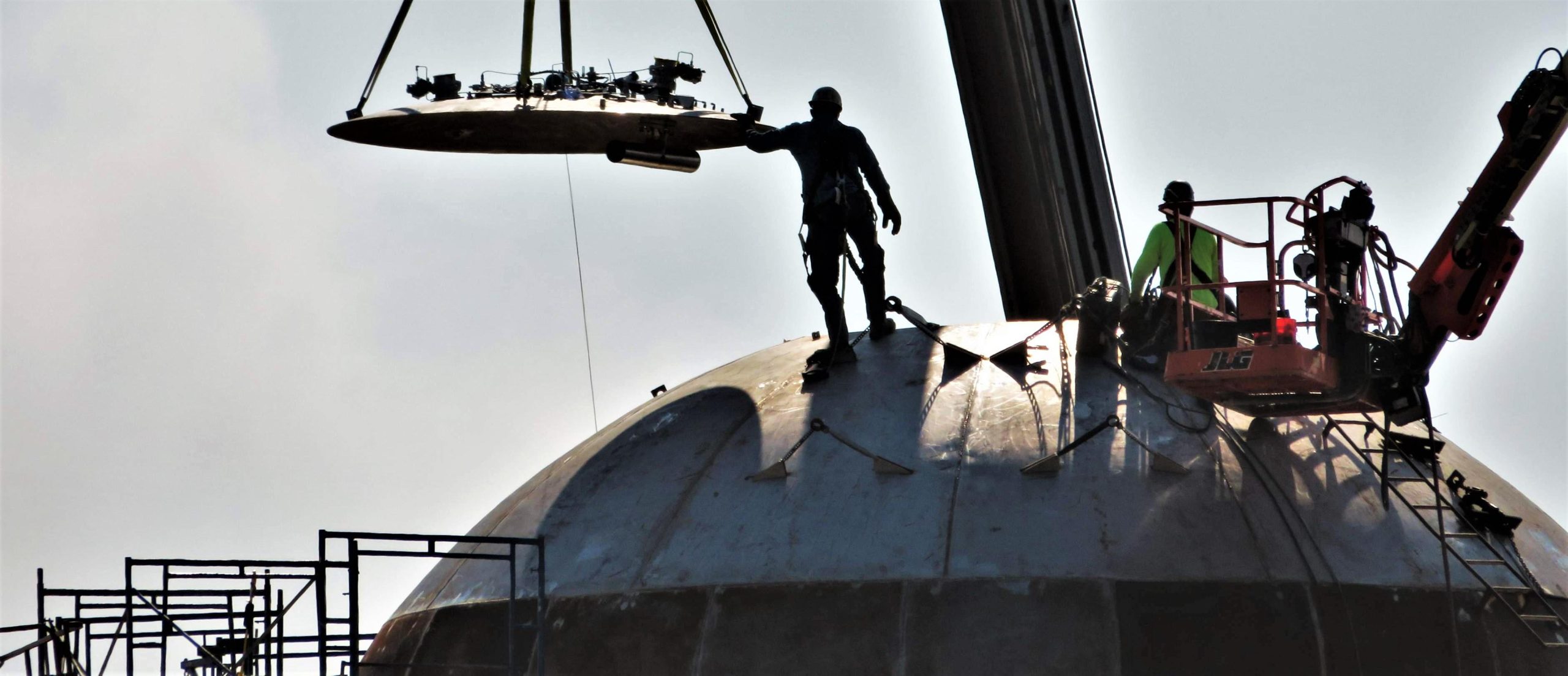
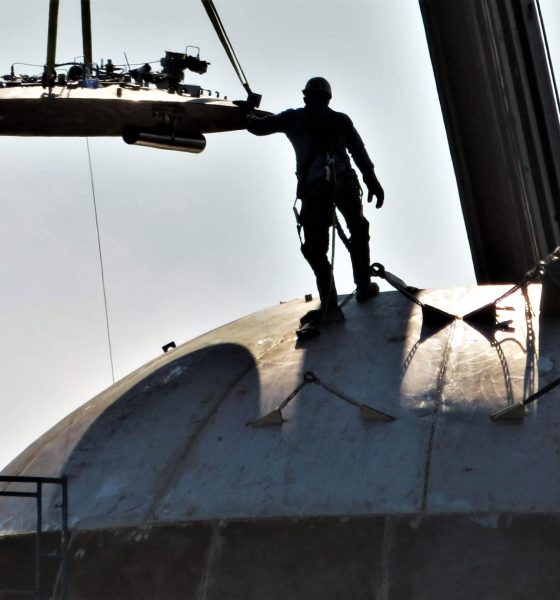
News
SpaceX’s Starship prototype is looking increasingly rocket-like as hop test pad expands
As SpaceX’s South Texas operations continue full steam ahead in pursuit of the first integrated hop tests of a full-scale Starship prototype, the company’s Starhopper and its complementary launch/hop pad are dramatically and visibly evolving on a daily basis.
This week’s progress has been signified by the installation of familiar rocket hardware on the Ship and a burst of construction – centered around pipelaying, plumbing, foundation work, and berm-building – at its pad. Just a few hundred miles north of Boca Chica, SpaceX’s team of propulsion engineers and technicians reached their own dramatic milestone, conducting the first static fire of a finalized version of the Raptor engine set to power Starship and Super Heavy (formerly BFR).
2-4-2019#SpaceX #TheFuture pic.twitter.com/0YBxk5QXD3
— Austin Barnard🚀 (@austinbarnard45) February 5, 2019
A pad fit for a Starhopper
In the last ~10 days alone (Jan 24-Feb 4), SpaceX pad construction workers and contractors transformed the former dirt mound from a generally flat, planed surface with a spattering of shipping containers and building materials into a hive of welding rigs, propellant and water tanks, major plumbing progress, shaped earth, and the beginnings of new concrete foundations. Thanks to local student Austin Barnard’s reliable drone photography, that pad-specific progress can be more properly visualized.


Taken on January 24th and February 4th respectively, the devil is definitely in the details when it comes to SpaceX’s prospective Starhopper pad development. Most notable is the progress made with the rapidly developing propellant plant and ground systems infrastructure in the left half of the images, marked by hundreds of feet of freshly-installed piping meant to support the process of fueling Starhopper with liquid methane and oxygen. For a rocket as powerful as Starhopper (even with just three Raptor engines), cooling both the propellant and the concrete launch and landing pad is no less important, visible in the shape of three large water tanks (lefthand foreground) and a smaller radiator stack (just to the right of two taller, skinnier white tanks.
Aside from the rapid rise of the first BFR propellant farm and its supporting equipment, SpaceX has progressed into the installation of a trio of concrete foundations just to the right of the dirt berm and propellant tank area. Standing as close as it is to said propellant tanks, it seems unlikely that the new foundation-laying is related to the pad (or a stand) meant to support early Starhopper hop tests, although SpaceX’s Falcon 9-era Grasshopper and F9R hop test vehicles operated about the same distance from its propellant infrastructure. SpaceX’s South Texas site also features a sort of satellite pad at its east end (the right side in attached photos) that could have a future as an integration hangar or a secondary landing zone to allow for Starhopper to perform divert tests.
- Rockets are perhaps even more capital intensive. (SpaceX)
- BFR’s booster is at least three times more powerful still than BFS at liftoff. (SpaceX)
- BFR (2018) breaks through a cloud layer shortly after launch. (SpaceX)
- (SpaceX)
- BFR’s booster, now known as Super Heavy. (SpaceX)
Depending on whether SpaceX actually intends to develop the land shown above into an actual full-scale launch facility for BFR (Super Heavy and Starship), it could also remain generally unchanged until Starhopper’s hop test program has been run to completion, at which point everything seen above would likely be rebuilt from scratch to accommodate for any drastic changes in function. SpaceX’s Boca Chica might simply be too small to support a pad capable of launching Super Heavy (nearly twice as powerful as Saturn V at full thrust), measuring in at considerably less than ~10 acres of usable area compared to LC-40’s ~20 acres and Pad 39A’s ~50+ acres. CEO Elon Musk has also hinted at using a giant floating platform for early orbital BFR launches, although that might prove even harder (and more costly) than building a traditional land-based pad.
Becoming a rocket
Meanwhile, the aft engine/fin/tank section of SpaceX’s Starship prototype (unofficially nicknamed Starhopper) has experienced a stream of hardware additions and improvements, modifying its relatively awkward and unfinished steel base with what appear to be Falcon 9-sized quick-disconnect umbilical panels, a functional propellant tank header, and mounting hardware for carbon-overwrapped pressure vessels (COPVs). By using hardware that is proven and easy to manufacture, SpaceX can save a huge amount of time that would otherwise need to be spent engineering subassemblies that (at risk of undervaluing the challenge) are generally known-quantities – more a matter of time and effort than an actual technical hurdle.
- B1048’s second umbilical panel (blue for oxygen). (Pauline Acalin)
- Falcon 9 B1048 displays one of two umbilical panels (red for kerosene) after its first launch. (Pauline Acalin)
- Starhopper’s partially completed umbilical panel as of Feb. 4th. (NASASpaceflight – bocachicagal)
- A SpaceX technician or contractor is pictured here cutting out sections of Starhopper’s steel hull to route umbilical panel piping. (NASASpaceflight – bocachicagal, 02/03/19)
- Starhopper also had a tank header installed on February 5th, complete with pressure regulation and propellant feeding hardware. (NASASpaceflight – bocachicagal)
While they are clearly still in a rough, unfinished form, Starhopper’s umbilical panels are already easy to recognize when compared alongside Falcon 9’s iconic red and blue panel pairs. In essence, whereas Starhopper has been a largely unknown quantity with no familiar aspects since it began to come together late last year, the Starship prototype has recently had hardware installed that is finally revealing subtle SpaceX signatures in its design and assembly.
Check out Teslarati’s newsletters for prompt updates, on-the-ground perspectives, and unique glimpses of SpaceX’s rocket launch and recovery processes!

News
Tesla Full Self-Driving lands in a new country, its 7th
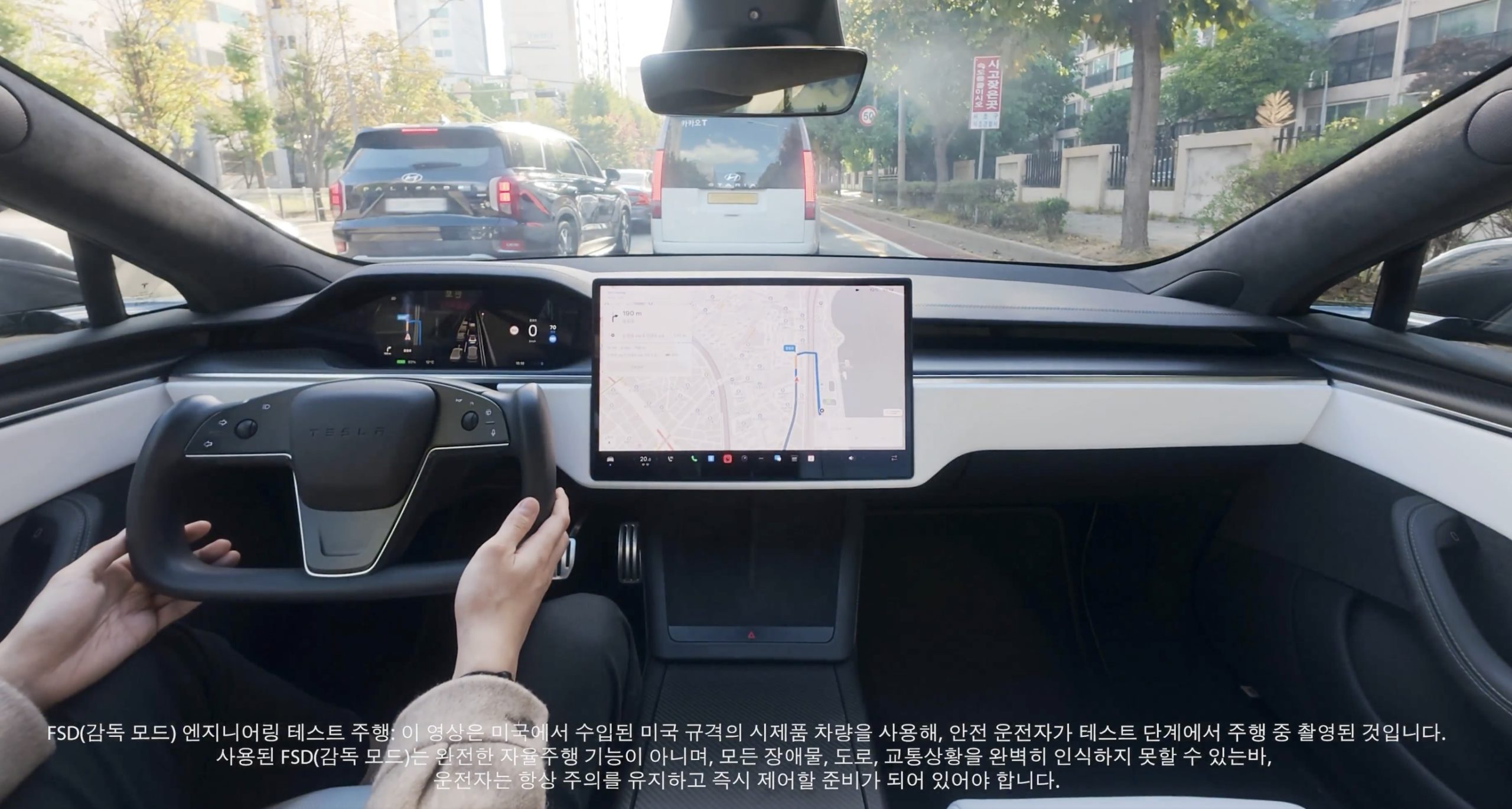
Tesla Full Self-Driving has officially landed in a new country today, its seventh overall after it launched in both Australia and New Zealand earlier this year.
On Sunday, Tesla owners in South Korea reported that the company’s Full Self-Driving (Supervised) had started arriving in their vehicles. Owners reported that it was v14.1.4, which is not the latest version available in other countries, but is one of the most recent releases Tesla has deployed to drivers:
From 6 to 7
Tesla Full Self-Driving has launched in South Korea; the 7th country to have FSD https://t.co/X6gm1SyoxV
— TESLARATI (@Teslarati) November 23, 2025
This marks the seventh country in which Tesla has enabled its Full Self-Driving suite, following the United States and Puerto Rico, Canada, China, Mexico, Australia, and New Zealand.
Tesla launched Full Self-Driving most recently in Australia and New Zealand about three months ago. The expansion is a major breakthrough for the company as it aims to launch Full Self-Driving on a global scale.
However, the company’s biggest challenge thus far has been getting European regulatory agencies to handle the red tape that has inhibited Tesla from launching its semi-autonomous driving suite on the continent. Recently, it admitted that it sees a pathway through Dutch regulatory bodies, which seem to be the most willing to work with Tesla to get FSD in Europe.
Tesla Full Self-Driving appears to be heading to Europe soon
The company said that it has driven over 1 million kilometers safely on European roads across 17 different countries in internal testing. But its path to success will be by “partnering with the Dutch approval authority RDW to gain exemption for the feature. This involves proving compliance with existing regulations (UN-R-171 DCAS) + filing an exemption (EU Article 39) for yet-to-be-regulated behaviors like Level 2 systems off-highway, system-initiated lane changes with hands-off the wheel, etc.”
Perhaps the expansion into Europe will be the biggest challenge for Tesla, but it could also yield major results and advantages for the company moving forward. Tesla said it hopes to have FSD available in Europe sometime early next year.
For now, the expansion in South Korea is the latest win for Tesla and its self-driving efforts. In the U.S., it now turns its focus toward fully autonomous operation, as it works with state agencies to launch Robotaxi outside of Texas, California, and most recently, Arizona.
Elon Musk
Tesla CEO Elon Musk teases insane capabilities of next major FSD update

Tesla CEO Elon Musk teased the insane capabilities of the next major Full Self-Driving update just hours after the company rolled out version 14.2 to owners.
Tesla Full Self-Driving v14.2 had some major improvements from the previous iteration of v14.1.x. We were on v14.1.7, the most advanced configuration of the v14.1 family, before Tesla transitioned us and others to v14.2.
However, Musk has said that the improvements coming in the next major update, which will be v14.3, will be where “the last big piece of the puzzle finally lands.”
14.3 is where the last big piece of the puzzle finally lands
— Elon Musk (@elonmusk) November 21, 2025
There were some major improvements with v14.2, most notably, Tesla seemed to narrow in on the triggers that caused issues with hesitation and brake stabbing in v14.1.x.
One of the most discussed issues with the past rollout was that of brake stabbing, where the vehicle would contemplate proceeding with a route as traffic was coming from other directions.
We experienced it most frequently at intersections, especially four-way stop signs.
Elon Musk hints at when Tesla can fix this FSD complaint with v14
In our review of it yesterday, it was evident that this issue had been resolved, at least to the extent that we had no issues with it in a 62-minute drive, which you can watch here.
Some owners also reported a more relaxed driver monitoring system, which is something Tesla said it was working on as it hopes to allow drivers to text during operation in the coming months. We did not test this, as laws in Pennsylvania prohibit the use of phones at any time due to the new Paul Miller’s Law, which took effect earlier this year.
However, the improvements indicate that Tesla is certainly headed toward a much more sentient FSD experience, so much so that Musk’s language seems to be more indicative of a more relaxed experience in terms of overall supervision from the driver, especially with v14.3.
Musk did not release or discuss a definitive timeline for the release of v14.3, especially as v14.2 just rolled out to Early Access Program (EAP) members yesterday. However, v14.1 rolled out to Tesla owners just a few weeks ago in late 2025. There is the potential that v14.3 could be part of the coming Holiday Update, or potentially in a release of its own before the New Year.
News
Tesla Full Self-Driving v14.2 – Full Review, the Good and the Bad

Tesla rolled out Full Self-Driving version 14.2 yesterday to members of the Early Access Program (EAP). Expectations were high, and Tesla surely delivered.
With the rollout of Tesla FSD v14.2, there were major benchmarks for improvement from the v14.1 suite, which spanned across seven improvements. Our final experience with v14.1 was with v14.1.7, and to be honest, things were good, but it felt like there were a handful of regressions from previous iterations.
While there were improvements in brake stabbing and hesitation, we did experience a few small interventions related to navigation and just overall performance. It was nothing major; there were no critical takeovers that required any major publicity, as they were more or less subjective things that I was not particularly comfortable with. Other drivers might have been more relaxed.
With v14.2 hitting our cars yesterday, there were a handful of things we truly noticed in terms of improvement, most notably the lack of brake stabbing and hesitation, a major complaint with v14.1.x.
However, in a 62-minute drive that was fully recorded, there were a lot of positives, and only one true complaint, which was something we haven’t had issues with in the past.
The Good
Lack of Brake Stabbing and Hesitation
Perhaps the most notable and publicized issue with v14.1.x was the presence of brake stabbing and hesitation. Arriving at intersections was particularly nerve-racking on the previous version simply because of this. At four-way stops, the car would not be assertive enough to take its turn, especially when other vehicles at the same intersection would inch forward or start to move.
This was a major problem.
However, there were no instances of this yesterday on our lengthy drive. It was much more assertive when arriving at these types of scenarios, but was also more patient when FSD knew it was not the car’s turn to proceed.
Can report on v14.2 today there were ZERO instances of break stabbing or hesitation at intersections today
It was a significant improvement from v14.1.x
— TESLARATI (@Teslarati) November 21, 2025
This improvement was the most noticeable throughout the drive, along with fixes in overall smoothness.
Speed Profiles Seem to Be More Reasonable
There were a handful of FSD v14 users who felt as if the loss of a Max Speed setting was a negative. However, these complaints will, in our opinion, begin to subside, especially as things have seemed to be refined quite nicely with v14.2.
Freeway driving is where this is especially noticeable. If it’s traveling too slow, just switch to a faster profile. If it’s too fast, switch to a slower profile. However, the speeds seem to be much more defined with each Speed Profile, which is something that I really find to be a huge advantage. Previously, you could tell the difference in speeds, but not in driving styles. At times, Standard felt a lot like Hurry. Now, you can clearly tell the difference between the two.
It seems as if Tesla made a goal that drivers should be able to tell which Speed Profile is active if it was not shown on the screen. With v14.1.x, this was not necessarily something that could be done. With v14.2, if someone tested me on which Speed Profile was being used, I’m fairly certain I could pick each one.
Better Overall Operation
I felt, at times, especially with v14.1.7, there were some jerky movements. Nothing that was super alarming, but there were times when things just felt a little more finicky than others.
v14.2 feels much smoother overall, with really great decision-making, lane changes that feel second nature, and a great speed of travel. It was a very comfortable ride.
The Bad
Parking
It feels as if there was a slight regression in parking quality, as both times v14.2 pulled into parking spots, I would have felt compelled to adjust manually if I were staying at my destinations. For the sake of testing, at my first destination, I arrived, allowed the car to park, and then left. At the tail-end of testing, I walked inside the store that FSD v14.2 drove me to, so I had to adjust the parking manually.
This was pretty disappointing. Apart from parking at Superchargers, which is always flawless, parking performance is something that needs some attention. The release notes for v14.2. state that parking spot selection and parking quality will improve with future versions.
Any issues with parking on your end? 14.1.7 didn’t have this trouble with parking pic.twitter.com/JPLRO2obUj
— TESLARATI (@Teslarati) November 21, 2025
However, this was truly my only complaint about v14.2.
You can check out our full 62-minute ride-along below:
